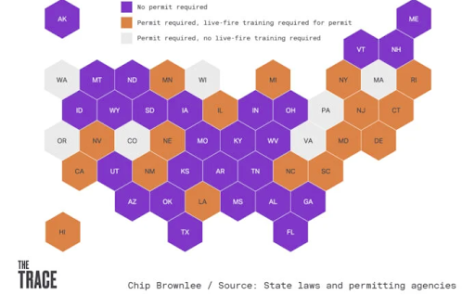Ocean pollution: Where does your plastic really go?
November 26, 2019
Oceans cover approximately 70 percent of our planet and is deemed one of the most valuable natural resources on Earth. Despite this, each year 10.5 million tons of plastic is thrown or dumped into the ocean. This causes marine life to suffer and die after consuming it. Plastic bags can take up to 20 years to decompose and plastic bottles 450 years.
Plastic and other substances have been found in more than 60 percent of all seabirds and in 100 percent of the sea turtles species.
By not doing something now, it is predicted that in 10 years, there would be more than 250 million metric tons of garbage and plastic in the ocean. Companies have made things like metal straws and reusable grocery bags in an effort to stop plastic from going into the ocean and affecting the marine life.
Rebecca Heiser, a special education teacher at Central York High School, is the advisor of a club group called The Earth Saver’s Club. They collect plastic lids for recycling in order to create benches to be placed in the school for everyone to see.
She believes that “it is a terrible thing that is happening to our world. The amount of plastic and garbage in the world is insane if you really think about it.”
The Earth Saver’s Club wants to show that plastic not only affects the marine life, but it also affects human beings. As the plastic debris floats in the seawater, it absorbs dangerous pollutants, such as DDT and PAH. These chemicals are highly toxic and have grand effects including cancer-causing mutations.
The Great Pacific Garbage Patch, also known as the Pacific Trash Vortex, is a gyre of plastic located in the waters from the West Coast of North America to Japan. It is comprised of the Western Garbage Patch, near Japan, and the Eastern Garbage Patch, located near Hawaii and California.
The area measures more than 1.6 million square kilometers, which measures three times the size of France. Studies have shown that the satellites in space can see the garbage that is contained in the Garbage Patch.
Sixteen-year-old, Greta Thunberg, a Swedish environmental activist, urges world leaders to enact change in the world’s approach to climate preservation. She posted on twitter saying, “The problem of plastic pollution in the ocean is even worse than anyone feared.”
On Wednesday, Sept. 9, Thunberg had a brief conversation withRep. Garret Graves (R-La.) during congressional testimony. During this meeting, she talks about the amount of trash sailors throw into the water when they travel.
“If you were sailing across the ocean and you’re picking up trash along the way, and for every piece of trash you pick up there is a boat right next to you dumping out five pieces. How would that make you feel?” he asked. Thunberg replied with “I would stop dumping my trash in the ocean and ask the other boat to stop dumping their trash in the ocean as well.”





![“She [Walker] was the biggest advocate for any student,” said Basile.](https://mundismillmedia.com/wp-content/uploads/2023/05/Colorful-Watercolor-Note-Paper-with-Brush-Stroke-A4-Document-336x475.png)



